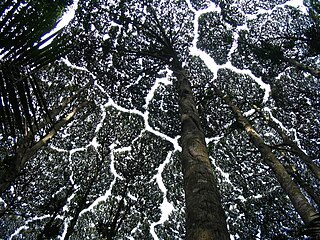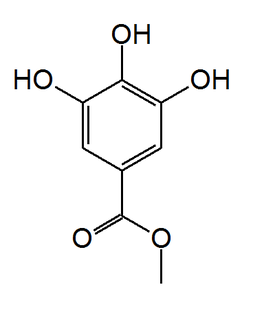Alba is the Scottish Gaelic name for Scotland.

Bergenia is a genus of ten species of flowering plants in the family Saxifragaceae, native to central Asia, from Afghanistan to China and the Himalayan region.
Elephant ear may refer to:

Black vine weevil is an insect native to Europe but common in North America as well. It is a pest of many garden plants.

Hemis National Park is a high altitude national park in Ladakh, India. Globally famous for its snow leopards, it is believed to have the highest density of them in any protected area in the world. It is the only national park in India that is north of the Himalayas, the largest notified protected area in India and is the second largest contiguous protected area, after the Nanda Devi Biosphere Reserve and surrounding protected areas. The park is home to a number of species of endangered mammals, including the snow leopard. Hemis National Park is India's protected area inside the Palearctic realm, outside the Changthang Wildlife Sanctuary northeast of Hemis, and the proposed Tso Lhamo Cold Desert Conservation Area in North Sikkim.

Arbutin is a glycoside; a glycosylated hydroquinone extracted from the bearberry plant in the genus Arctostaphylos among many other medicinal plants, primarily in the family Ericaceae. Applied topically, it inhibits tyrosinase and thus prevents the formation of melanin. Arbutin is therefore used as a skin-lightening agent. Very tiny amounts of arbutin are found in wheat, pear skins, and some other foods. It is also found in Viburnum opulus and Bergenia crassifolia. Arbutin was also produced by an in vitro culture of Schisandra chinensis.

Dryobalanops aromatica, commonly known as Borneo camphor, camphor tree, Malay camphor, or Sumatran camphor, is a species of critically endangered plant in the family Dipterocarpaceae. The species name aromatica is derived from Latin and refers to the smell of the dammar (resin). This species was one of the main sources of camphor and attracted early Arab traders to Borneo, at that time being worth more than gold, and used for incense and perfumes.
The Karakoram Wildlife Sanctuary, also known as the Karakoram Wildlife Sanctuary or the Karakoram Wildlife Sanctuary is a high altitude wildlife sanctuary located in the easternmost reaches of the Karakoram range in Leh district, in the Indian union territory of Ladakh. It was established in 1987 and covers an area of about 5,000 square kilometres (500,000 ha). It is important as one of the few places in India with a migratory population of the Chiru or Tibetan Antelope.

Afzelechin is a flavan-3-ol, a type of flavonoid. It can be found in Bergenia ligulata. It exists as at least 2 major epimers.

Bergenia ligulata is a plant belonging to the family Saxifragaceae and the genus Bergenia. It is plant is sometimes treated as a form of Bergenia ciliata. It is mostly found in temperate regions of the Himalayas from Kashmir to Bhutan and in Khasia hills at 1,500 m (4,900 ft) altitude.

Bergenia crassifolia is a plant species in the genus Bergenia. Common names for the species include heart-leaved bergenia, heartleaf bergenia, leather bergenia, winter-blooming bergenia, elephant-ears, elephant's ears, Korean elephant-ear, badan, pigsqueak, Siberian tea, and Mongolian tea.

Bergenin, alias cuscutin, is trihydroxybenzoic acid glycoside. It is the C-glycoside of 4-O-methyl gallic acid. It possesses an O-demethylated derivative called norbergenin. These are chemical compounds and drugs of Ayurveda, commonly known as Paashaanbhed. It shows a potent immunomodulatory effect.

Bergenia ciliata is a plant species in the genus Bergenia, deciduous in USDA Zones 5 to 7, but usually remain semi-evergreen south of Zone 7. It is found in Afghanistan, south Tibet, Northern Nepal, Bhutan. Also found in abundance in northern India in Himachal Pradesh in district Shimla. It is commonly known in India as Pathar phor buti.

Norbergenin is a chemical compound. It is the O-demethylated derivative of bergenin. It can be isolated from rhizomes of Bergenia stracheyi.

Mallotus japonicus, also known as East Asian mallotus, the food wrapper plant or "Akamegashiwa" in Japanese, is a plant species in the genus Mallotus native to China. It is also found in Japan and Korea. This species was first described in 1865, its name was verified by AAS Systematic Botanists on October 2, 2015.

Methyl gallate is a phenolic compound. It is the methyl ester of gallic acid.

Hen and chicken is a common name for several unrelated groups of plants. The name refers to the tendency of certain of these species to reproduce vegetatively by means of plantlets. These tiny plants are produced by the mother plant, and take root on touching the ground.

Leontopodium stracheyi is a species of plant in the family Asteraceae. It is native to China, Bhutan, India and Nepal.

Neolissochilus stracheyi is a species of cyprinid in the genus Neolissochilus. It inhabits Myanmar and Thailand and has a maximum length of 60.0 centimetres (23.6 in).

Bergenia purpurascens, the purple bergenia, is a species of flowering plant in the family Saxifragaceae. It is a perennial herb and is native to Nepal, the eastern Himalayas, Assam, Tibet, south-central China, and Myanmar. The species, its putative variety Bergenia purpurascens var. delavayi, and its cultivar 'Irish Crimson' have all gained the Royal Horticultural Society's Award of Garden Merit. A useful feature in the garden is the visual interest that its foliage provides by turning a deep beet red during the winter. The Latin specific epithet purpurascens is in reference to the foliage that is purple in color.

















